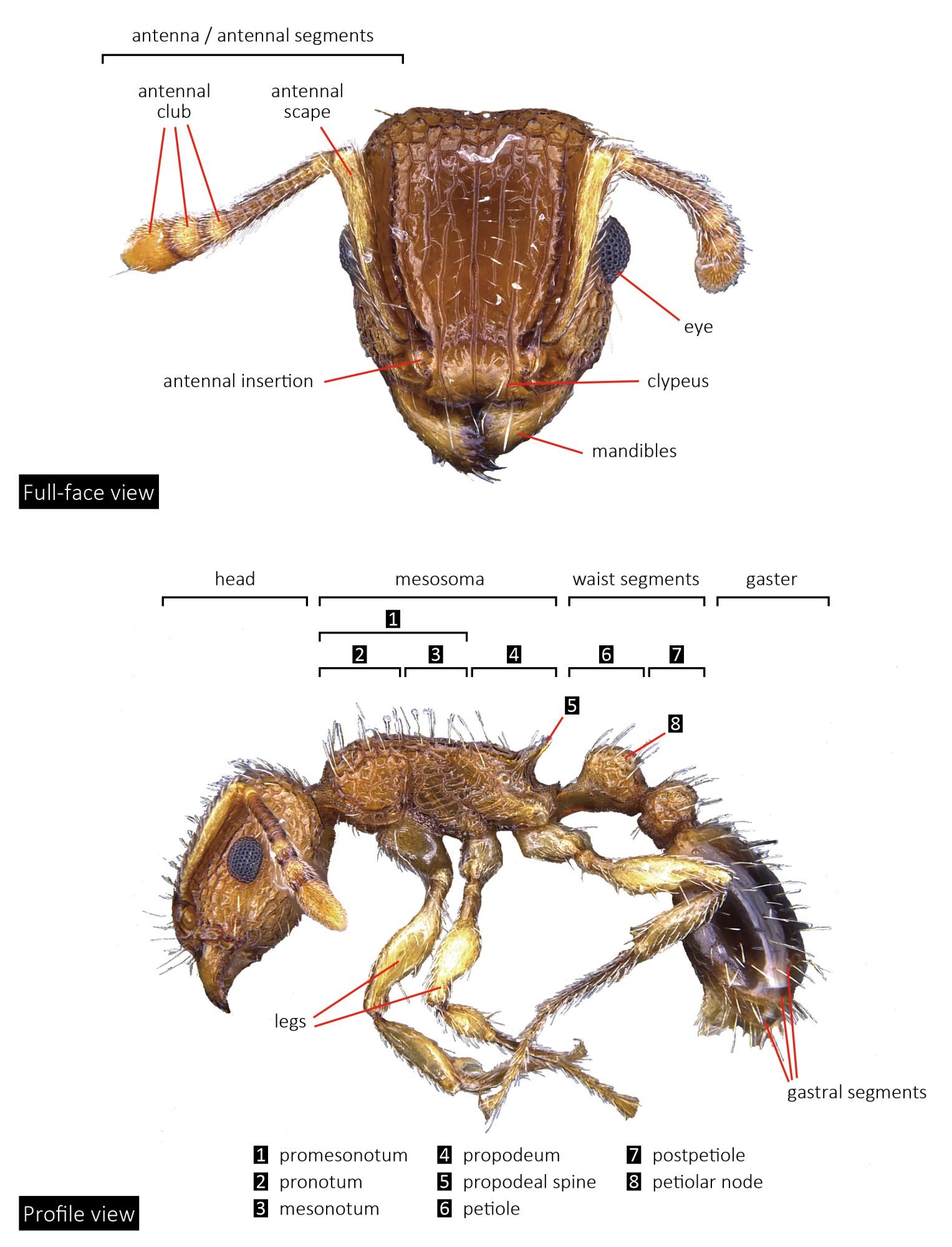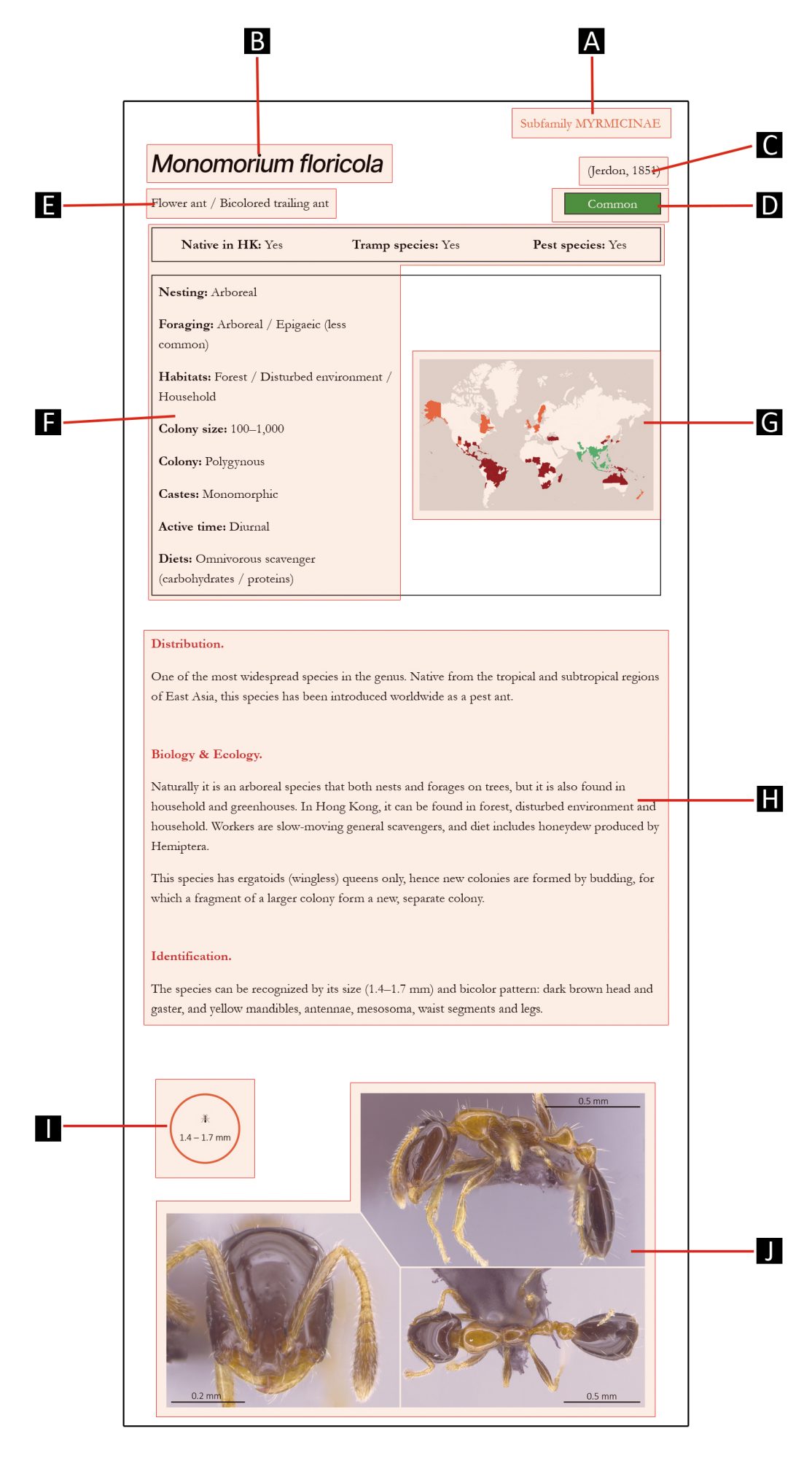
Subfamily PONERINAE
GENUS
Brachyponera
Emery, 1900
Distribution.
A small ant genus with 18 species described. The genus has a widespread distribution in the tropical and subtropical regions of the Old World. Several species of the genus have been introduced worldwide as invasive and pest ants.
Biology & Ecology.
Nests of Brachyponera species are usually located within the soil or decaying wood. Nests are small to medium in size, contain a few dozen workers to several thousands of workers, sometimes forming facultative polygynous colonies (one or more egg-laying queen per colony).
Brachyponera species are general hunters and scavengers, and sometimes also seed-eaters. Their stings are potentially dangerous, as life-threatening allergic reactions due to the venom is not rare and have been reported around the world.
This genus is known to have significant size difference between queens and workers, which is unusual for its subfamily (Ponerinae).
Identification.
Brachyponera species are medium in size (4–7 mm), with brown to black coloration. They can be recognized by their color, eyes close to the mandibles, the posterior portion of mesosoma (propodeum) at a lower level than the anterior portion (promesonotum) and by having a narrow waist segment.

Species in this genus




